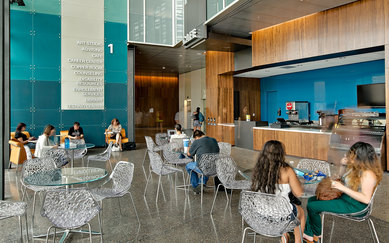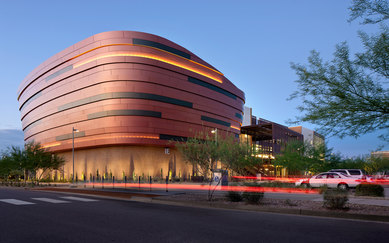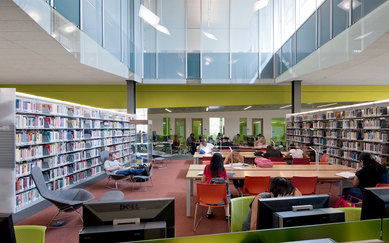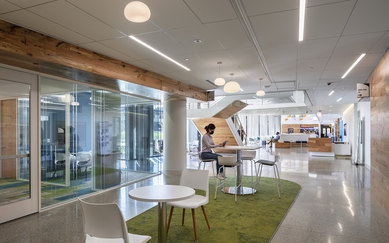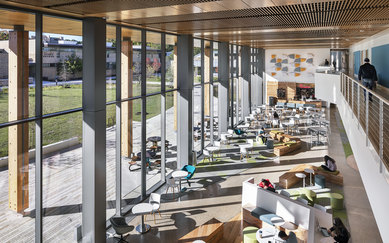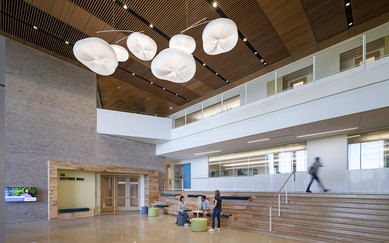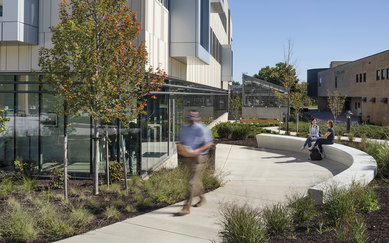Designing with Purpose: Putting the “Community” in Community College
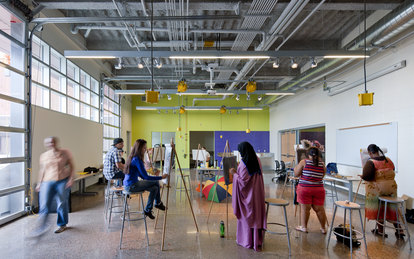
I decided I wanted to be an architect when I was 13 years old. Like many students entering college, I thought I would learn how to become an architect by taking classes on the subject. While that is true to some extent, the best lessons I learned while in college were how to relate to and communicate with people. That is what an architect does. We generate spatial ideas to solve problems for the communities we serve and communicate them daily to our clients, our colleagues and the world. My professional network is comprised of relationships with people that began to form in college and followed me into the profession. It still has a significant impact on my work today, and it all started at a two-year college in Southern California that instilled in me the importance of community.
For many students, alumni, faculty and higher education administrators, the term “community college” has a double meaning. The first relates to its geographical reach, as the catchment area of these colleges usually serves students from adjacent communities. The second meaning runs much deeper and is commonly linked to the institution’s mission to enrich the lives of students beyond academia. This second meaning addresses a student’s mind, body and spirit simultaneously, providing the foundation for the work of planners, engineers and architects to have meaningful impact on the lives of students, to build community with intent and create memorable places for diverse groups of people to connect.
Science tells us that human beings have an intrinsic need to connect with others. Regardless of where you fall on the introvert-extrovert spectrum, interacting with others is good for us. According to Dr. Emma Seppala, strong social connection can “strengthen your immune system, help you recover from disease faster, and may lengthen your life.” For students, the pressures of academic life can take a toll on their well-being, but facing obstacles within a support network of peers along their journey can elevate their chances of success and boost their overall health. Having unrestricted access to relax within calming landscapes or capitalizing on outdoor learning experiences can also benefit their physical and mental health.
As designers, we can use our skills to create spaces and places that encourage interaction and enable relationship building. When planning a new building, renovating an old one or embarking on a campus plan, consider the following strategies to promote connection:
Form Intentional Crossovers: Create spatial intersections to promote chance encounters and transparency for visual access to bolster activity awareness.
Make Every Square Inch Count: Leverage spaces within common circulation systems to create bespoke areas to dwell and expand use to promote academic exploration outside of formal teaching spaces.
Diversify the Social Scale: Vary social spaces in size, shape, location and level of enclosure so students can find the best fit for their comfort level.
The rising costs for attending college is a major factor for students searching for the best approach for learning opportunities that fit them. Although tuition costs at two-year community colleges are much lower when compared to four-year universities, students still experience barriers to entry related to finances. Food insecurity and housing scarcity prevent some students from attending even when tuition is free. With many colleges offering student success programs to help overcome such obstacles, program awareness becomes the key to effectiveness. How can designers partner with community colleges to help students without financial means, a stable food source or place to live? Consider the following planning strategies:
Place Services Front and Center: Prioritize placement of Student Services facilities at the front of campus, at a gateway location to create program awareness that is readily accessible. On a smaller scale, consider integrating a Welcome Center into a prominently located existing building to provide a link to services with a personal touch.
Design for a Food Pantry: Plan for inclusion by locating the pantry (or entry into it) connected with or adjacent to other campus food amenities to focus on establishing dignity and normalcy for underserved students. If a program does not exist, broach the subject with administrators and inquire about potential partnerships with local food vendors.
Consider Open-Source Restroom Facilities: Plan restrooms and/or locker rooms with access from the exterior to extend operating hours to accommodate the housing insecure student population. Security can be provided via key cards using student identifications to permit access during hours of non-operation.
Capitalize on Athletics Infrastructure: If the college has an athletics program, consider providing supervised access to the equipment room for laundering services. Providing a secondary exterior door into the laundry room would allow housing challenged students supervised entry for use of the laundering equipment.
California is home to the largest collection of community colleges in the country, with 116 colleges providing access to education for 1.8 million students. This provides a large-scale opportunity to reach out and impact the lives of students who will define our future. With thoughtful planning and designing with intention, we can create impactful learning communities that will change their lives for the better and help them realize their dreams. I am living my dream of working as an architect, and at SmithGroup, we are seeking to build community and design a better future for our students, our communities and our world. Will you join us?
